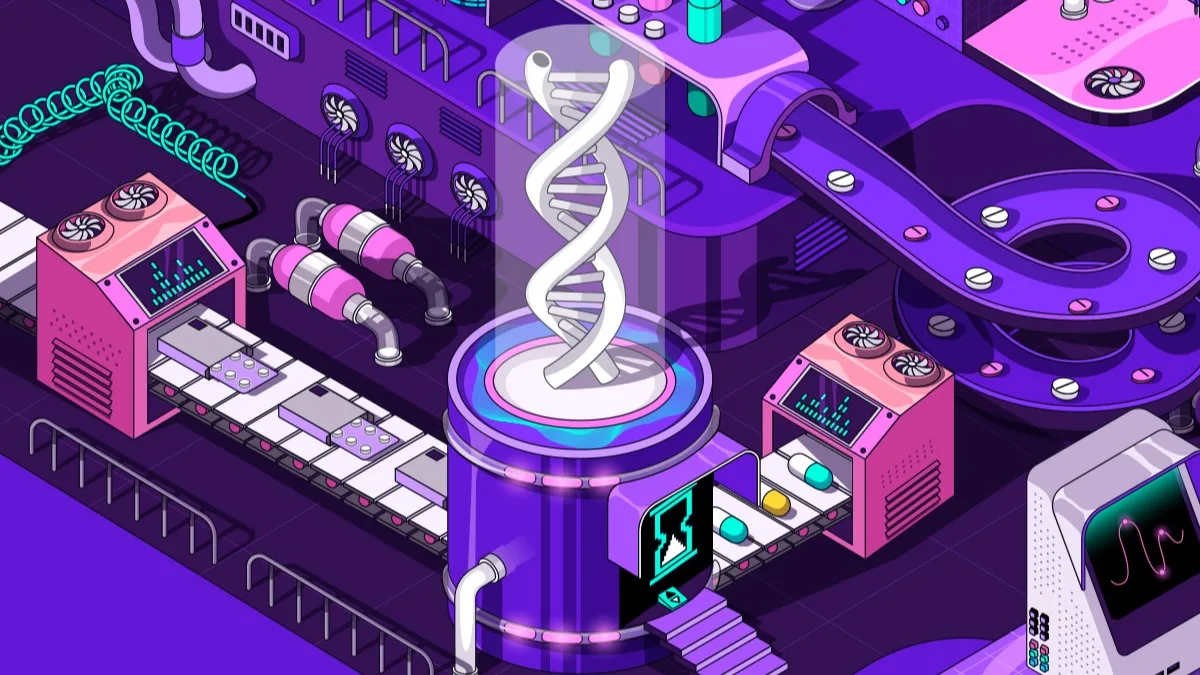
Credit: Image created by Cure, Google Gemini
Overview
Core facilities equip healthcare innovators with shared access to advanced technologies, expert support and collaborative insights to accelerate discovery while reducing costs.
Specialized labs offer centralized tools, the latest technologies and dedicated expertise to drive innovation
The development of new research technologies and their expanding applications has often leap-frogged discovery and innovation, not unlike how mapping the human genome accelerated precision diagnostics and therapies.
But for a single academic or startup lab, purchasing and maintaining cutting-edge equipment is often cost-prohibitive. Training staff to operate it can be equally burdensome, and unless the tools are used frequently, the investment may not pay off.
That’s where core facilities come in. These specialized labs provide shared access to advanced equipment, highly-specialized services, and technical expertise that individual researchers and entrepreneurs might otherwise lack. Typically housed in academic and research institutions, many also extend their services to the private sector, including startups, nonprofits and commercial organizations.
From high-end instrumentation and expert technical support to guidance on study design and optimized data generation, core facilities offer invaluable resources that help investigators translate early-stage ideas into commercially viable innovations.
For life science entrepreneurs, especially in the early stages when resources are tight, core facilities can be a game-changer. They serve not only as centralized service providers, but also as incubators for new technologies and hubs of collaboration that help innovators move faster on their missions.
4 Ways Core Facilities help Startups Hit Scientific Milestones Sooner.
1. Access to the Latest High-End Equipment
The first core facilities were created in the 1990s and primarily offered DNA sequencing and bioinformatics services. With the completion of the Human Genome Project and a new focus on high-throughput data generation and analysis, development of newer technologies significantly accelerated, making it untenable for individual labs to purchase and maintain all of the equipment they need.
Instrumentation such as flow cytometers, mass spectrometers and next-generation genetic sequencers, as well as services like sample processing and gene editing, including CRISPR, come with a hefty price tag. Modern core facilities also offer proteomics, metabolomics, electron microscopy, synthetic chemistry, single-cell analysis and nuclear magnetic resonance spectroscopy, among others.
Updating and maintaining this equipment is a full-time job. Core facility staff plan for needed device upgrades and turnover, equipment decommissioning, and the renewal of software licenses, so individual investigators don't have to.
For a startup, using a core facility could save your company money and time, so you dedicate your focus and resources on the aspects of your R&D that only you can do.
"Our core facilities are laboratories that perform experiments and assays that are often technically complex and require sophisticated instrumentation. These core facilities can be accessed by individual laboratories to facilitate and advance their programs," explained Robert Benezra, PhD, Deputy Director for Core Technologies at Memorial Sloan Kettering Cancer Center (MSKCC), in a video on the cancer center's website.
2. Staff with Specialized Expertise
Startups can expect that the staff of a core facility has maintained its credentials and has up-to-date expertise on the site’s equipment, tools and services. These built-in skills and knowledge help startups generate high-quality, reproducible results, which are critical for investor confidence and meeting regulatory milestones.
As a startup, you can use the core facility to expand your bench strength and build out expertise you may not need full time, while focusing your hiring on team members with other vital skills that can move your company forward.
3. Guidance on Study Design
Today's core facility teams often are available to guide the execution of the most effective study designs so you can get the best start on developing an innovative idea. Many offer package deals that include experimental design, sample preparation and guidance on data generation, analysis and presentation.
Because the core team works with a variety of scientists conducting a diverse portfolio of investigations, they can provide insights you might not have considered. And through their collaboration with multiple researchers who have evolving needs, core facilities become incubators and developers of novel technologies.
"Cores facilitate the development of new methods and technologies through a real collaborative process with the labs. It can be a new method, a protocol, a new assay or new instrumentation," said Agnès Viale, PhD, Director of Core Facilities Operations at MSKCC.
4. Stoking Collaboration
Core facilities may also help initiate partnerships between researchers or innovators.
Some core facilities are embedded in incubators or innovation hubs like LabCentral or Hatch.Bio. Like Cure, these facilities may link entrepreneurs with access to peer networks, strategic partners and potential collaborators.
When You Should Consider Using a Core Lab
It might be advantageous for you to use a core facility if:
You don't have the budget or space for the equipment your project requires.
You need specialized expertise that is not available from your company's staff.
Your work requires high-throughput capabilities, such as the large-scale data analysis associated with genomics and proteomics.
You only need access to specialized instrumentation for a limited time.
If you're building a biotech venture, core facilities are not just a convenience. They are a strategic advantage that can strengthen your bottom line and help you meet your goals faster.








